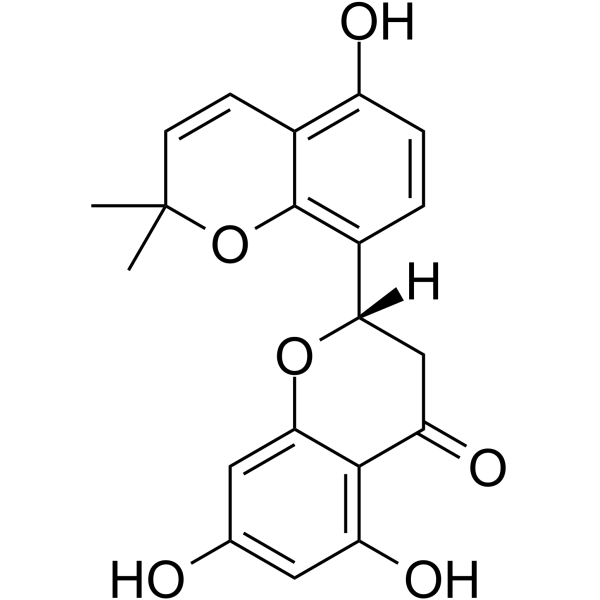
Sanggenone H
CAS No. 86450-80-8
Sanggenone H( —— )
Catalog No. M31458 CAS No. 86450-80-8
Sanggenone H may have antiphlogistic activity, it attenuated the secretion of TNF-α± and IL-1α2 and inhibited the NF-κB nuclear translocation in LPS-stimulated macrophages.
Purity : >98% (HPLC)
 COA
COA
 Datasheet
Datasheet
 HNMR
HNMR
 HPLC
HPLC
 MSDS
MSDS
 Handing Instructions
Handing Instructions
| Size | Price / USD | Stock | Quantity |
| 5MG | 379 | In Stock |


|
| 50MG | Get Quote | In Stock |


|
| 100MG | Get Quote | In Stock |


|
Biological Information
-
Product NameSanggenone H
-
NoteResearch use only, not for human use.
-
Brief DescriptionSanggenone H may have antiphlogistic activity, it attenuated the secretion of TNF-α± and IL-1α2 and inhibited the NF-κB nuclear translocation in LPS-stimulated macrophages.
-
DescriptionSanggenone H may have antiphlogistic activity, it attenuated the secretion of TNF-α± and IL-1α2 and inhibited the NF-κB nuclear translocation in LPS-stimulated macrophages.
-
In Vitro——
-
In Vivo——
-
Synonyms——
-
PathwayOthers
-
TargetOther Targets
-
Recptor——
-
Research Area——
-
Indication——
Chemical Information
-
CAS Number86450-80-8
-
Formula Weight354.4
-
Molecular FormulaC20H18O6
-
Purity>98% (HPLC)
-
Solubility——
-
SMILES——
-
Chemical Name——
Shipping & Storage Information
-
Storage(-20℃)
-
ShippingWith Ice Pack
-
Stability≥ 2 years
Reference



-
Schisantherin C
Schisantherin A, B, C, and D show good effect in lowering the serum glutamic-pyruvic transaminase level of the patients suffering from chronic virus hepatitis.
-
Atrial Natriuretic F...
Anaritide is a synthetic form of atrial natriuretic peptide (ANP) composed of 25 amino acids. Anaritide increases glomerular filtration rate by dilating into and contracting out the bulbar arterioles. Anaritide can be used to study the effects on patients with acute tubular necrosis, particularly in improving dialysis free survival.
-
RH01386
RH01386 is a small molecule that can prevent ER stress-induced β cell dysfunction and death, and inhibits proapoptotic gene expression,has the potential for type 2 diabetes treatment. RH01386 restores ER stress-impaired glucose-stimulated insulin secretion responses.



 Cart
Cart
 sales@molnova.com
sales@molnova.com


